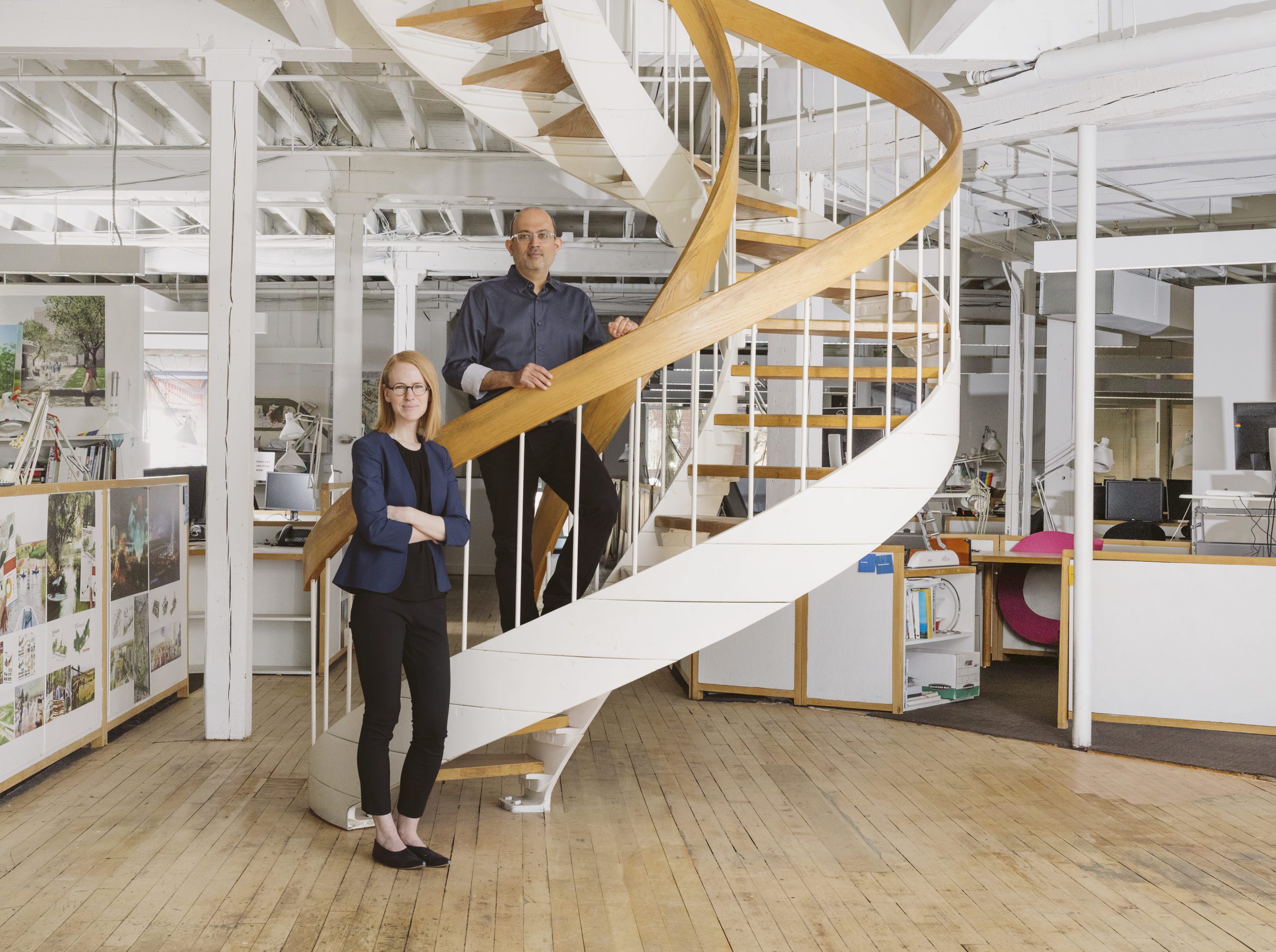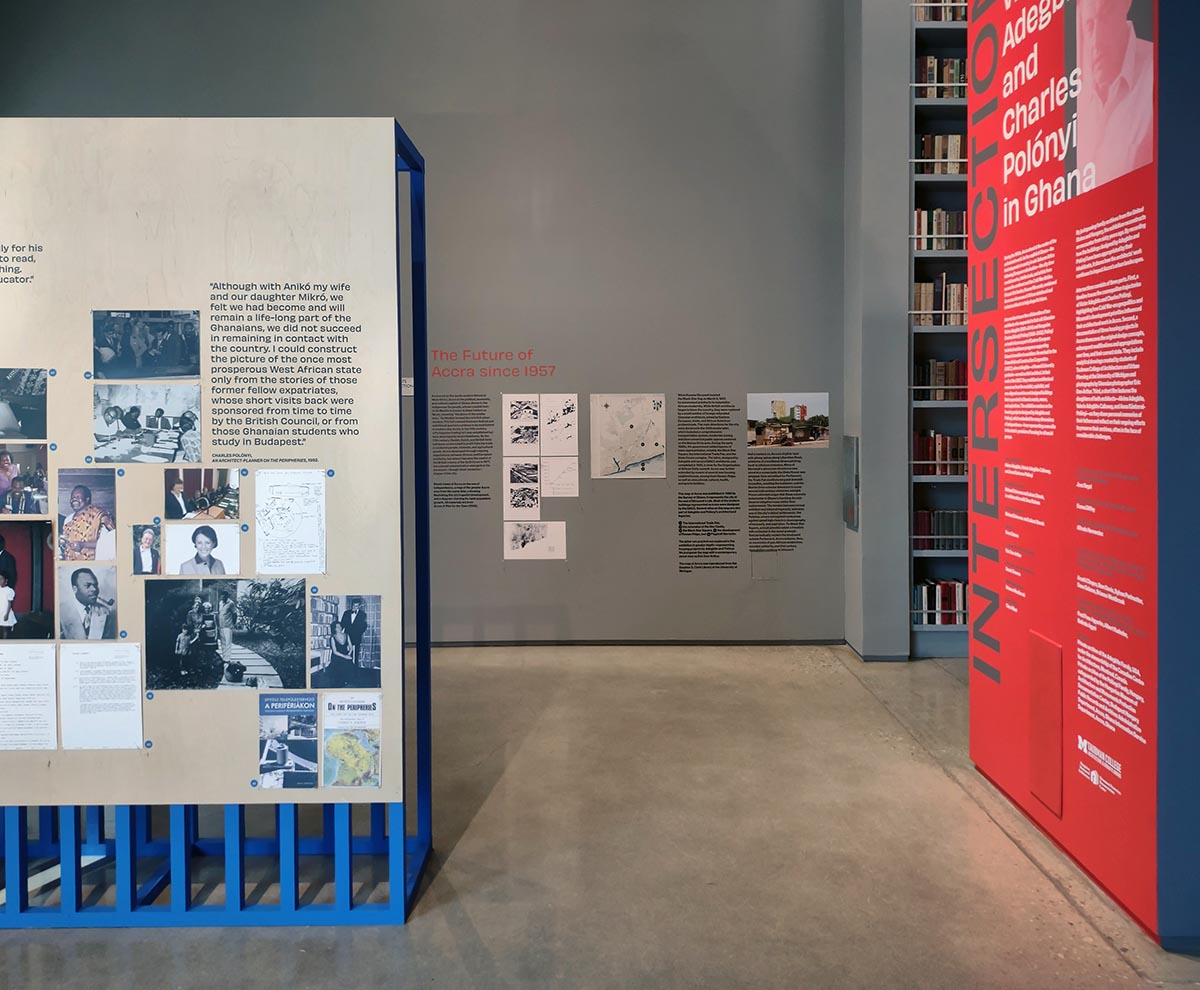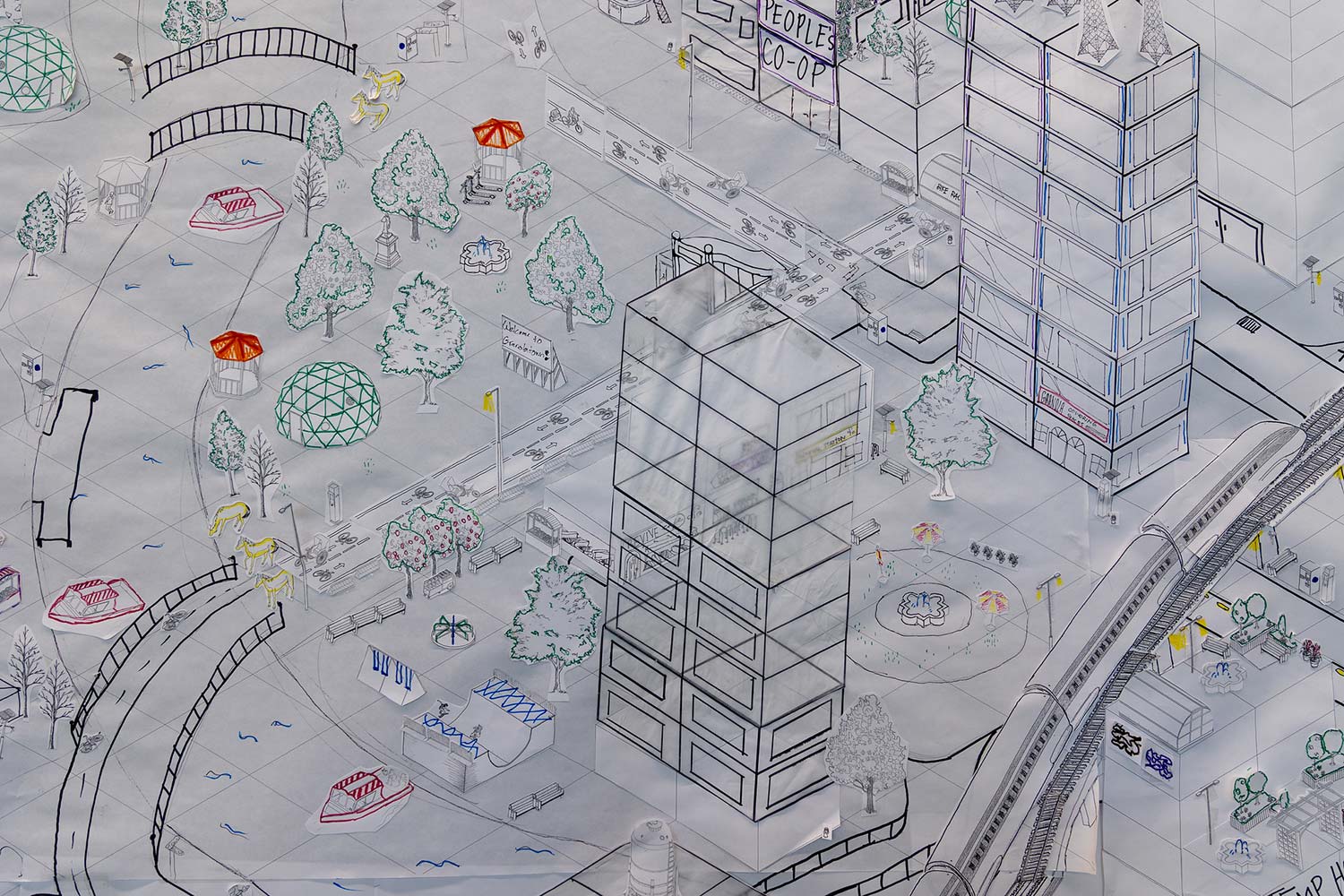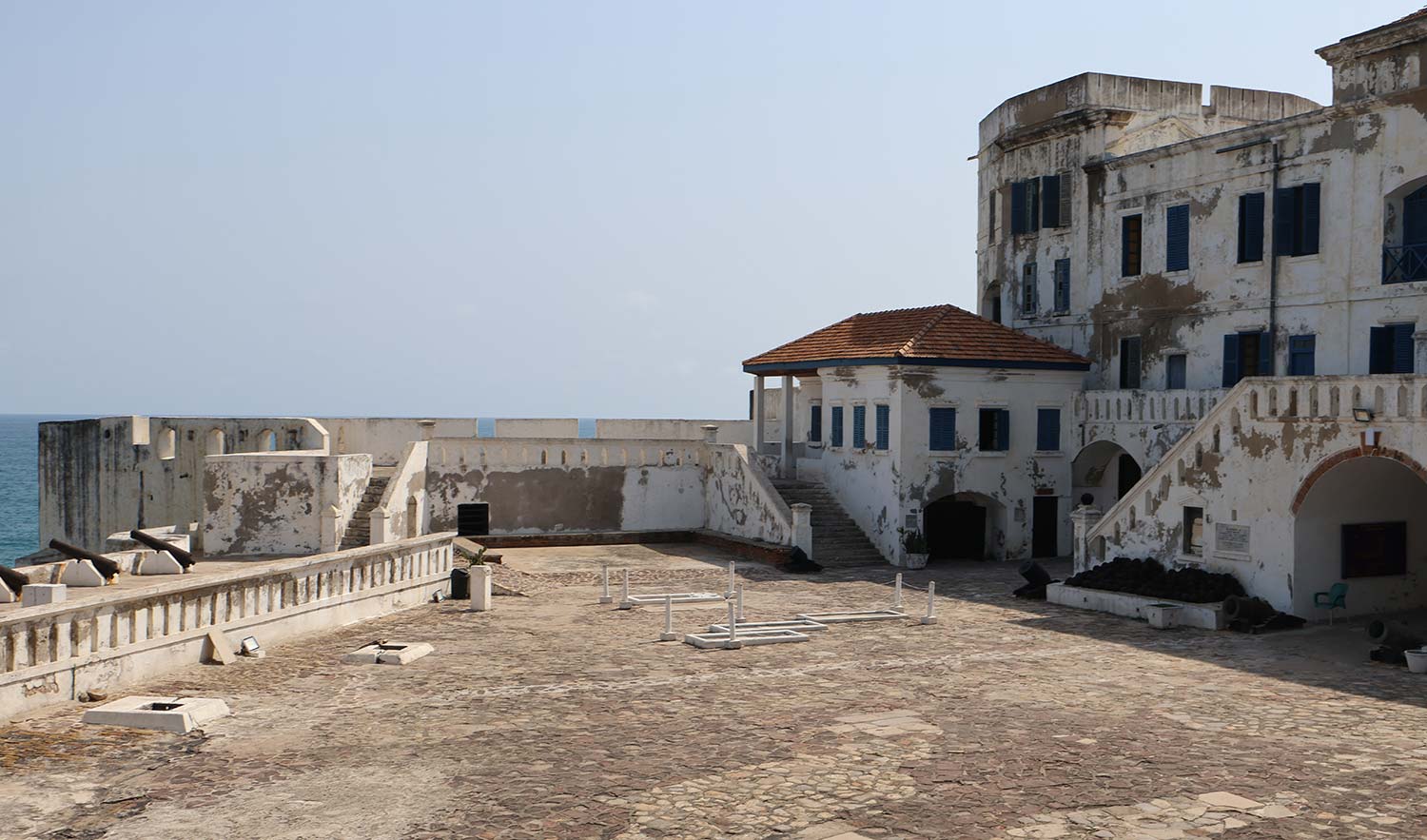
Portico Spring 2021: Caitlyn Clauson, M.U.P. ’07, and Romil Sheth, M.U.D. ’06, M.S. ’10, Help Campuses and Cities Look to the Future
The pandemic gave many couples front-row seats to observe each other’s work lives. But for Caitlyn Clauson and Romil Sheth, co-working this past year hasn’t been much different than the earliest days of their relationship — sitting side by side when they’d always show up early to secure seats in Robert Fishman’s uber-popular History of Urban Form class. “Since 2005, I don’t think we’ve ever worked more than 20 feet apart,” Clauson laughs.
Today, the pair have moved from the classrooms of Ann Arbor to the leadership ranks at Sasaki, a Boston-based interdisciplinary design firm. Clauson, M.U.P. ’07, is a chair-at-large on Sasaki’s board and campus planning principal within the planning and urban design (PUD) discipline; Sheth, M.U.D. ’06, M.S. ’10, is an urban design principal within PUD.
Because of Sasaki’s integrated approach, their work is far from siloed.
Since joining the firm in 2007, Clauson and Sheth have collaborated on multiple campus planning projects with larger interdisciplinary teams, including a new campus for a Chinese university currently under construction. “It’s been rewarding to see the transition from master plan to a built project,” Sheth says. “Those are the kinds of projects we dream about at Sasaki, where we can deeply tie together planning, architecture, and landscape architecture, for example, to derive highly contextual, rigorously planned and designed places.” Bringing their distinct expertise to the table on multifaceted projects “has allowed us to develop and thrive as professionals,” adds Sheth, “while also having fun.”
Together, they collaborated on the University of Washington (UW) campus master plan, which was especially fulfilling on a personal level for Clauson, a Seattle native who earned her bachelor’s degree there. The project helped them maintain their ties to the Pacific Northwest, while Clauson says UW’s broad outlook made the work exciting: “They were looking at a long-term, aspirational vision for a campus situated within a rapidly growing city.” Part of that vision was integration with the broader urban district around the university and creation of new public spaces that bring the city and university to the water. “The regulatory nature of the plan required a lot of engagement with public entities. The plan ultimately served as the basis for the city’s formal zoning code guiding height limits and development capacity for the university,” says Clauson. Sheth adds, “It was rewarding to work not only with Caitlyn but also with other members of the multifaceted Sasaki community, like landscape architects and transportation planners, to look at the problem in a comprehensive way.”
Clauson has focused her career on campus planning; she estimates that she has partnered with at least 50 institutions. Currently, she is working with the University of California, Berkeley, a campus that, like UW, is intertwined with a dense urban area that continues to grow and experience challenges as a result. Through the campus master plan, Clauson, alongside a collaborative interdisciplinary team, is helping UC Berkeley respond to resilience factors ranging from seismic considerations to impacts of climate change to increasing housing capacity.
One issue that continues to gain importance for her university clients is diversity, equity, and inclusion. Clauson co-authored a 2018 article in the Society of College and University Planning (SCUP)’s Planning for Higher Education Journal on how campus planning and physical space can reflect an institution’s commitment to these values. She emphasizes that the goal is to have welcoming spaces for all — from integrating multicultural centers and affinity group spaces to creating accessible campus environments. “There are explicit and implicit messages that are communicated through the built environment,” Clauson says. “Campuses should be spaces where individuals can see themselves, their histories, and narratives be reflected in the campus environment.”
Sheth, who practiced as an architect in Mumbai before attending U-M, has worked on many different kinds of projects for Sasaki around the world, including a research and technology district for Arizona State University; an innovation hub in midtown Detroit; a financial center in Moscow; the Dead Sea Development Zone in Jordan; and universities in Indonesia, Mexico, and India, to name a few. One project, the Songzhuang Arts and Agriculture City near Beijing, China, won the American Planning Association (APA)’s Pierre L’Enfant International Planning Excellence Award, one of the APA’s highest honors.
The diversity of his portfolio is a natural extension of his lifelong immersion in cities and interest in their myriad layers, Sheth says: “Beyond the object of a building, I’ve always had that lens that I wanted to broaden my horizon and engage with larger issues of the urban condition and how cities are made and operate.”
Sheth’s current projects include master planning for Thu Duc City — formed in 2021 within the Ho Chi Minh City region. Vietnam’s first city within a city, it eventually will be home to two million people in one of the world’s most vulnerable cities with regard to sea-level rise and climate change. Two interesting aspects of the project have been to convince leaders to give citizens a voice in the planning process and to develop a comprehensive resiliency and flood mitigation strategy. “The changes the government has agreed to with regard to merging three districts into this one new city will allow the city to be more efficient in managing space and infrastructure, and be a catalyst for investment,” says Sheth, who will liaise with the World Bank and other global institutions that have signed on to the venture.
Like everyone, Clauson and Sheth have navigated challenges during the pandemic, working at home alongside their two daughters. But they’re also embracing opportunities. When Clauson had to cancel community forums in Berkeley, she worked with Sasaki’s in-house data visualization and programming specialists, Sasaki Strategies, to create a virtual open house and interactive website whose success will serve as a model for public engagement well beyond the pandemic. The rise of video conferencing means Sheth can reduce his carbon footprint and time away from home while connecting more frequently with his clients in Vietnam. The rise of work-from-home arrangements and the heightened awareness of racial socioeconomic inequities in 2020 have strong implications for campus and community planning and have prompted similar reflections and recalibrations within Sasaki, which Sheth and Clauson welcome with open arms.
All in all, “I think of this time as a great reset,” says Clauson.
— Amy Spooner









